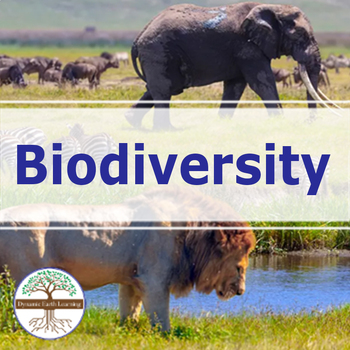The Importance of Biodiversity | Video Lesson, Handout, Worksheet | Environment
- PDF
- Google Apps™

Also included in
- Agriculture and Environmental science worksheets and other middle school science activities.Want this bundle in Google Format?❤️Follow My StoreClick on the green star next to the store logo to receive new product updates.How does farming affect the environment? What is agriculture sustainability? ThePrice $195.00Original Price $253.00Save $58.00
- Biodiversity unit environmental science worksheets for middle school or high school!Format:(Need these in Google Format? Click here)- Digital-PDFs for electronic sharing or easy printing- Article links (or video) is embedded into the guides for quick access- Answer keys providedThe research needed tPrice $31.20Original Price $39.00Save $7.80
- In these 99 environmental science lessons, students watch a short video, read an article, and then complete worksheets that prompt them to consider a wide range of environmental earth science topics. This curriculum covers topics such as sustainability, conservation, pollution, climate change, and nPrice $450.00Original Price $588.50Save $138.50
Description
Biodiversity refers to the variety of living things within an ecosystem, including species, genetic diversity, and ecosystem diversity. The interdependence of species within an ecosystem is highlighted, emphasizing how they rely on each other for survival. The lesson also discusses the characteristics of ecosystems with rich biodiversity and explains why warm climates tend to have greater biodiversity. It addresses the loss of biodiversity, including natural biodiversity loss due to seasonal changes and ecological disturbances, human-driven biodiversity loss caused by factors such as population growth, urbanization, farming, and pollution, and the disruption of ecosystems by non-native species. The consequences of biodiversity loss on ecosystems and humans are discussed, emphasizing the interconnectedness of ecosystems and the need to protect biodiversity. The lesson concludes by highlighting the Amazon rainforest as a region with significant biodiversity and emphasizing the potential failure of ecosystems if the loss of biodiversity continues.
In this environmental earth science lesson, students watch a short video, read an article, and then complete worksheets that prompt them to consider the importance of biodiversity.
Formats:
- Video mp4 file
- Handout PDF file
- Worksheets in 3 formats: Google, fillable PDF, and fully editable
- Link to blog with embedded video (in worksheet)








